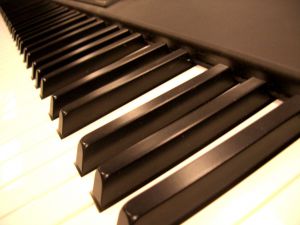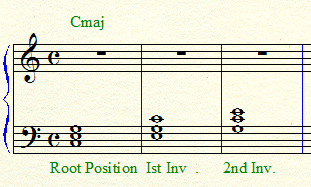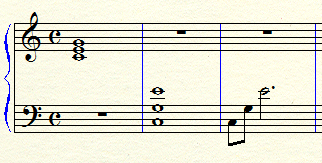 Walking Bass: A Cocktail Pianist’s Right Arm (Ooops, Left)
Walking Bass: A Cocktail Pianist’s Right Arm (Ooops, Left)
When you know how to play a walking bass line on piano at any given time, you are in possession of a shining tool that you are sure to keep at the very top of that piano playing toolbox of yours. Unfortunately, far too many pianists never attempt them and only marvel at the ability of other pianists who have a handle on this very useful cocktail piano playing technique.
Walking Bass: It Doesn’t Have To Be Complicated
Walking a bass line on piano can be accomplished on many levels. There are certainly concepts that are more advanced than others. But you have to start somewhere! Great news follows: you see, it’s not necessary to have those more advanced skills under your fingertips in order to put your playing across in a very professional way. Remember this: It’s not necessarily WHAT you know but how you use what you know.
Are you familiar with playing simple triads on the piano, for example? That in its own right lends itself to your creating effective bass lines for a beginner. Playing a basic triad in an arpeggiated manner works marvelously well.
Learning To Play Walking Bass On Piano: Momentum Is Key
A main point that I would like to get across here is that you want to connect yourself with a musical idea that allows you to play with some momentum without distraction. In other words, if you have your left hand fingering a C Major triad in the bass area, it’s just a matter of playing those keys as quarter notes, one at a time. You are not distracted by the act of having to look for them. Once you get your momentum going with a simple technique, it becomes easier to graduate to turning that idea into a more interesting line. Master what comes easy to you. Then more creativity can blossom from there.
I created a video session for beginners devoted to learning how to play walking bass lines on piano. In that lesson, an emphasis is placed on this momentum I just referred to. Here is a small excerpt:
Know Your Basic Chords
When you consider what a bass player will often resort to while walking, it makes sense that focusing on those chord tones is conducive to nice lines developing. A professional bass player, although capable of playing more complex lines, will often gravitate back to these chord tones, often using the 1 and 5 of the chord (for C Major: C>>G>>C, etc).
If you are familiar with 7th chords, then you can feel free to play those 7th chords as arpeggios as well, trading off between them and just the triads.
As you begin to feel confident with playing these “broken” chords, take if further. You’ll want to insert “neighbor” tones in between them to make your lines more interesting.
The Left Hand Must Know Its Place
A key point worth mentioning is that, however you play those walking bass lines on piano, keep it in perspective. Remember the role of those lines. They are serving as support and accompaniment to a melody or improvisation which takes priority. So, focus on maintaining a balance with your volume. That left side of the piano will naturally resound more intensely. Therefore, play with sensitivity by playing those walking bass lines on the softer side. Their importance will stand on their own without being accentuated with extra volume.
There is much more that can be said of playing walking bass lines on piano but this short lesson is intended to serve as a beginning from which you can spring from.
Enjoy the walk!




 When it comes to playing cocktail piano chords that are the among the easiest to play while being extremely effective, what we’ll be looking at here will rate high on the list. If you know how to play some simple triads (three-note chords), this will come easy to you. In addition, you’ll discover for yourself that, even if you don’t have a specific tune in mind, you can compliment a nice ambience with these cocktail piano chords when played subtlety and legato.
When it comes to playing cocktail piano chords that are the among the easiest to play while being extremely effective, what we’ll be looking at here will rate high on the list. If you know how to play some simple triads (three-note chords), this will come easy to you. In addition, you’ll discover for yourself that, even if you don’t have a specific tune in mind, you can compliment a nice ambience with these cocktail piano chords when played subtlety and legato.


 When it comes to cocktail piano chords that you’ll use often, this one must be mentioned. It is one of the easiest to understand. That said, if your left hand is not used to playing 10th intervals, it may take a little getting used to. However, any effort put into this is well worth it.
When it comes to cocktail piano chords that you’ll use often, this one must be mentioned. It is one of the easiest to understand. That said, if your left hand is not used to playing 10th intervals, it may take a little getting used to. However, any effort put into this is well worth it. In the second measure above, you will see that we are playing the C and G of this chord one octave lower. The E is played where it was originally on the piano keyboard (it’s just written in bass clef to be consistent with the lower two chord tones and to put everything in the context of the left hand). So, you see, we have taken the middle note (in this case, the E) and moved it an octave higher. This is often referred to as “opening up the chord.” The distance now between the C and E is now a 10th interval instead of a 3rd interval.
In the second measure above, you will see that we are playing the C and G of this chord one octave lower. The E is played where it was originally on the piano keyboard (it’s just written in bass clef to be consistent with the lower two chord tones and to put everything in the context of the left hand). So, you see, we have taken the middle note (in this case, the E) and moved it an octave higher. This is often referred to as “opening up the chord.” The distance now between the C and E is now a 10th interval instead of a 3rd interval. Time and time again, I have received emails from members of Piano Amore (www.PianoAmore.net) asking how someone at a beginner level can learn how to play cocktail piano from scratch, while having very little or no experience at all. I can’t tell you how much I appreciate those emails because when I read them, the enthusiasm of the person writing is always quite evident. So, if you’re one of those people who inquired, let me thank you because it’s people like you who inspire me to create ways of helping cocktail piano enthusiasts in any way I can.
Time and time again, I have received emails from members of Piano Amore (www.PianoAmore.net) asking how someone at a beginner level can learn how to play cocktail piano from scratch, while having very little or no experience at all. I can’t tell you how much I appreciate those emails because when I read them, the enthusiasm of the person writing is always quite evident. So, if you’re one of those people who inquired, let me thank you because it’s people like you who inspire me to create ways of helping cocktail piano enthusiasts in any way I can. An exploration of cocktail piano chords really ought to include an eventual thorough understanding of chord inversions. Mastery of your inversions is most certainly conducive to increased confidence when it comes to adding some style to those favorite songs of yours.
An exploration of cocktail piano chords really ought to include an eventual thorough understanding of chord inversions. Mastery of your inversions is most certainly conducive to increased confidence when it comes to adding some style to those favorite songs of yours. Your exploration of cocktail piano chords must include the eventual understanding and implementation of diatonic 7th chords. In essence, within a given key, the diatonic system represents the “skeleton” of that key that you are playing in.
Your exploration of cocktail piano chords must include the eventual understanding and implementation of diatonic 7th chords. In essence, within a given key, the diatonic system represents the “skeleton” of that key that you are playing in. As a cocktail piano player, you’ve just got to have a bit of a handle on playing some 12 bar blues piano. It’s a nice way to interrupt your routine with some tasteful variation. In addition, as you become more and more acquainted with playing blues piano, you’re sure to use some of that “bluesy” playing in your favorite standard songs, too.
As a cocktail piano player, you’ve just got to have a bit of a handle on playing some 12 bar blues piano. It’s a nice way to interrupt your routine with some tasteful variation. In addition, as you become more and more acquainted with playing blues piano, you’re sure to use some of that “bluesy” playing in your favorite standard songs, too. When it comes to playing cocktail piano, of the many piano improvisation tips I could offer, a favorite to promote that is most conducive to getting satisfying results is using chord tones. However, this approach can take on a more mature flair when your mind set is that of combining chord tones with thinking and playing in a linear fashion as well.
When it comes to playing cocktail piano, of the many piano improvisation tips I could offer, a favorite to promote that is most conducive to getting satisfying results is using chord tones. However, this approach can take on a more mature flair when your mind set is that of combining chord tones with thinking and playing in a linear fashion as well.